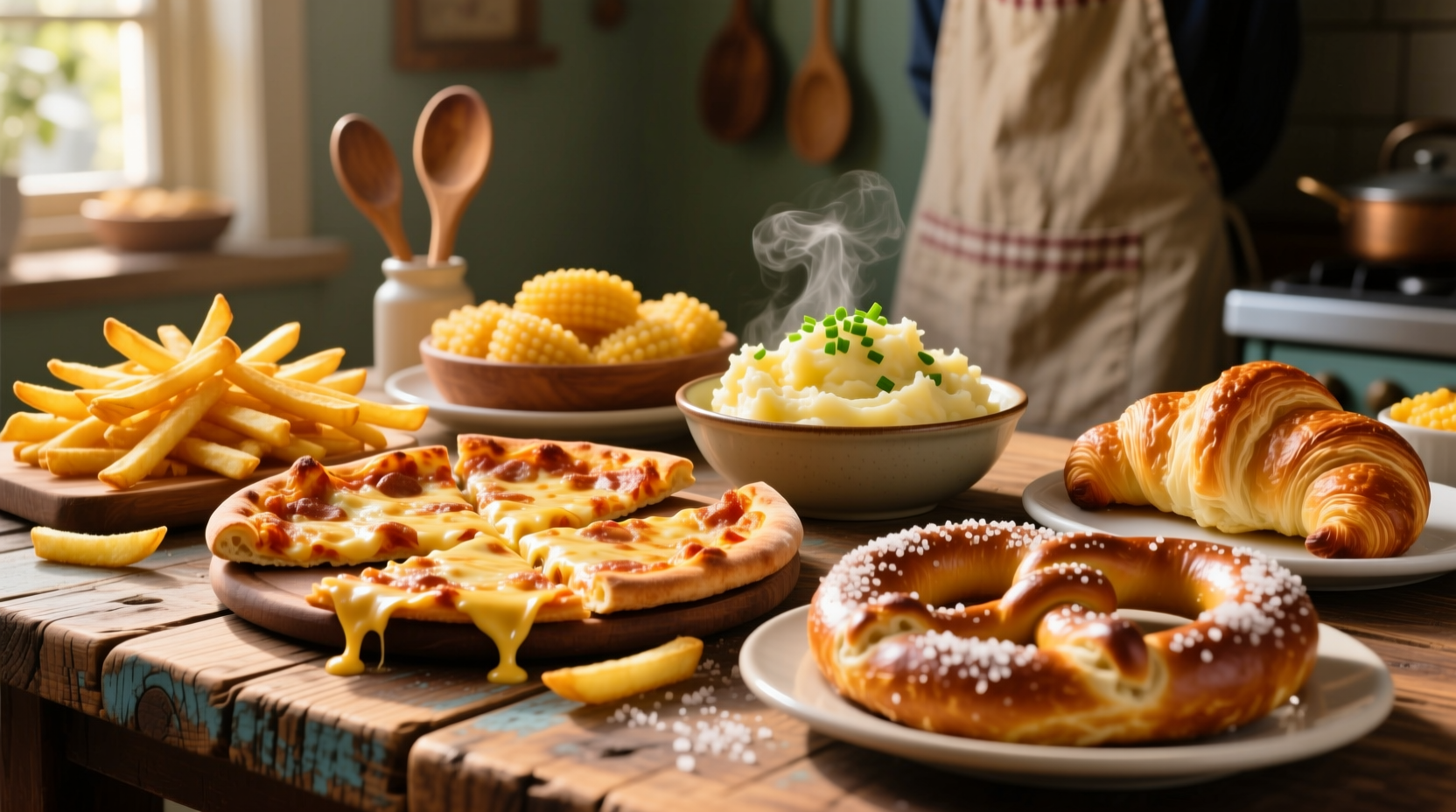The top foods highest in carbohydrates include white rice (45g per cup), cooked pasta (43g per cup), potatoes (37g per medium potato), oats (28g per 1/2 cup dry), and bananas (27g per medium banana). Whole grains, starchy vegetables, and certain fruits consistently rank as the most carb-dense natural food sources.
Understanding which foods contain the highest carbohydrate levels helps you make informed dietary choices whether you're managing blood sugar, fueling athletic performance, or simply tracking your nutrition. This comprehensive guide delivers precise carb counts from authoritative nutritional databases so you can navigate your dietary needs with confidence.
Why Carb Content Matters for Your Health Goals
Carbohydrates serve as your body's primary energy source, but their impact varies significantly based on type and quantity. While athletes might seek high-carb foods for endurance training, individuals managing diabetes need precise carb awareness. The quality of carbohydrates—whether they come from whole grains with fiber or refined sugars—affects how your body processes them. According to the Dietary Guidelines for Americans, carbohydrates should comprise 45-65% of your daily caloric intake, making it essential to understand which foods contribute most significantly to this requirement.

Top Carb-Dense Food Categories Compared
When evaluating which foods contain the most carbs, certain categories consistently dominate. The table below shows average carbohydrate content per standard serving from USDA FoodData Central, the most reliable nutritional database maintained by the U.S. Department of Agriculture.
| Food Category | Specific Food | Carbs per Serving | Fiber Content |
|---|---|---|---|
| Grains | White rice (cooked, 1 cup) | 45g | 0.6g |
| Grains | Cooked pasta (1 cup) | 43g | 2.5g |
| Starchy Vegetables | Medium potato (baked) | 37g | 4.0g |
| Fruits | Medium banana | 27g | 3.1g |
| Grains | Dry oats (1/2 cup) | 28g | 4.0g |
| Legumes | Cooked lentils (1 cup) | 40g | 15.6g |
Grains: The Highest Carb Food Group
Refined grains typically contain the highest concentration of carbohydrates by volume. A single cup of cooked white rice delivers approximately 45 grams of carbohydrates with minimal fiber content. Whole grains like quinoa (39g per cup) and brown rice (45g per cup) offer similar carb counts but with significantly more fiber and nutrients. For those seeking carbohydrate dense foods for energy, these grain options provide substantial fuel. The American Journal of Clinical Nutrition notes that whole grains offer more sustained energy release due to their fiber content compared to refined grains.
Starchy Vegetables: Natural Carb Powerhouses
Potatoes, sweet potatoes, and corn rank among the most carb-rich vegetables. A medium baked potato contains about 37 grams of carbohydrates, while one ear of corn provides approximately 27 grams. These foods offer not only carbohydrates but also valuable vitamins and minerals. The Centers for Disease Control and Prevention (CDC) recognizes starchy vegetables as important components of a balanced diet when consumed in appropriate portions, particularly for active individuals needing sustained energy.
Fruits with Significant Carb Content
While fruits contain natural sugars, they also provide essential vitamins, minerals, and fiber. Bananas (27g per medium fruit), mangoes (25g per cup), and grapes (27g per cup) rank highest among fruits for carbohydrate content. The fiber in whole fruits helps moderate blood sugar response compared to fruit juices or processed forms. According to research published in the Journal of Nutrition, whole fruits with higher fiber content create a more favorable glycemic response than their processed counterparts.
Practical Applications: Using High-Carb Foods Strategically
Knowing which foods have the most carbs allows you to make informed choices based on your specific health goals:
- For athletes: Consume high-carb foods like oats and bananas 1-2 hours before endurance activities to maximize glycogen stores
- For blood sugar management: Pair carb-dense foods with protein and healthy fats to slow glucose absorption
- For weight management: Focus on high-fiber carbohydrate sources that promote satiety while monitoring portion sizes
Registered dietitians often recommend the "plate method" for balanced carbohydrate intake: fill half your plate with non-starchy vegetables, one-quarter with lean protein, and one-quarter with carb-containing foods. This approach helps maintain appropriate carb consumption while ensuring nutritional balance.
Important Context: When High-Carb Foods Benefit or Require Caution
Carbohydrate needs vary significantly based on individual factors including activity level, metabolic health, and specific medical conditions. For individuals with diabetes, the American Diabetes Association recommends working with a healthcare provider to determine appropriate carb intake levels. Conversely, endurance athletes may require up to 8-10 grams of carbohydrates per kilogram of body weight daily during intense training periods, according to the International Society of Sports Nutrition.
Understanding the difference between simple carbohydrates (found in sugars and refined grains) and complex carbohydrates (found in whole grains, legumes, and vegetables) is crucial. Complex carbs generally provide more sustained energy and nutritional value. The Dietary Guidelines for Americans emphasizes choosing nutrient-dense carbohydrate sources rather than focusing solely on quantity.











 浙公网安备
33010002000092号
浙公网安备
33010002000092号 浙B2-20120091-4
浙B2-20120091-4